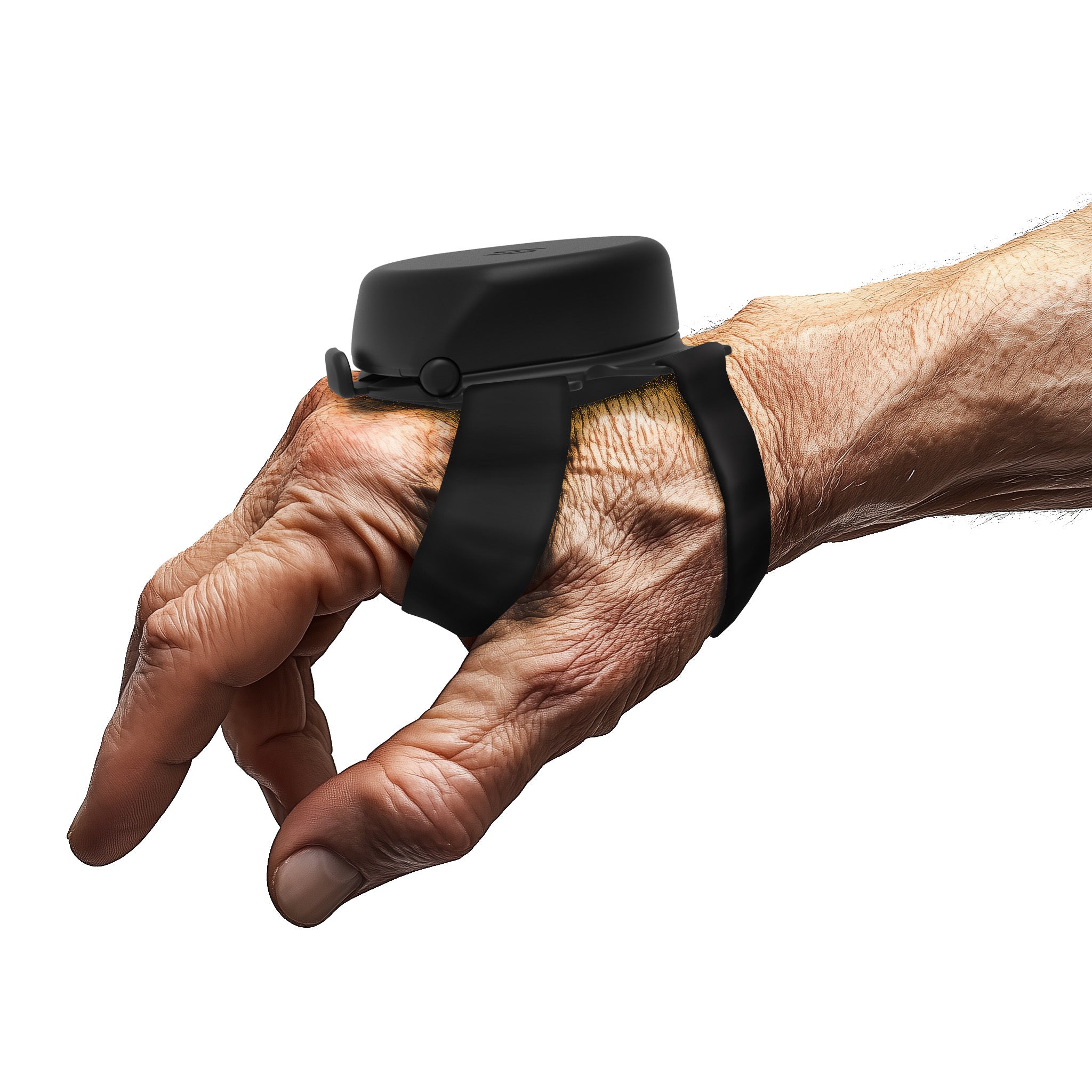Parkinson's Disease can make daily tasks more difficult, and one of the most impacted areas is eating. Tremors, muscle rigidity, and reduced dexterity can make it frustrating to use standard cutlery. Individuals may feel overwhelmed or embarrassed during meals, which can lead to decreased appetite and social isolation. Fortunately, there are specially designed Parkinson's utensils that help individuals maintain independence and dignity at the table. These tools offer more than convenience—they support quality of life. With the right adaptive utensils, individuals with Parkinson's can eat more confidently, reduce mess, and even reclaim some enjoyment from mealtimes. This blog explores the best utensils for Parkinson's and other practical solutions that make dining easier and more empowering.
Understanding the Challenges of Mealtime with Parkinson's
People with Parkinson's face unique difficulties during meals that most individuals take for granted. Tremors and hand stiffness can make holding a spoon or fork steady nearly impossible. Slow movements, involuntary shaking, and poor grip strength also contribute to frequent spills and frustration. Fine motor control deteriorates, making basic tasks like cutting meat or scooping soup increasingly difficult. Standard cutlery is often too lightweight and slippery, exacerbating these problems. For those who experience "off periods" where motor symptoms worsen, eating can become a stressful experience. This is why cutlery for tremors needs to be designed with these specific motor challenges in mind. Adaptive utensils offer practical support, allowing individuals to focus less on the mechanics of eating and more on nourishment and social connection. These utensils aren't just helpful—they're essential for safety, comfort, and confidence.
What are Adaptive Utensils?
Adaptive utensils are specialized eating tools modified to accommodate motor impairments. Designed with ergonomics and accessibility in mind, they provide practical solutions to help people eat independently. These utensils may feature enlarged handles to reduce the strain on weak muscles, ergonomic curves that fit naturally in the hand, or added weight to stabilize hand tremors. Some incorporate flexible handles that bend to accommodate a limited range of motion, while others use high-tech stabilization to counteract involuntary movements. Certain designs allow for one-handed use, making them ideal for individuals who have lost mobility in one arm. For those with Parkinson's, utensils for tremors can be life-changing, offering the ability to eat without constant assistance. By adapting to the user's physical needs, these utensils preserve independence and contribute to emotional well-being.
Weighted Utensils for Tremors: How Do They Work?
Weighted utensils for tremors are specifically designed to counteract hand shaking during meals. By adding extra mass to the cutlery, these utensils create a stabilizing effect that helps reduce the amplitude of tremors. This simple modification can drastically improve control, allowing users to bring food to their mouths more effectively. The weight reduces involuntary motion by slowing down erratic movements, making the utensil easier to maneuver. In addition to being heavier than standard flatware, these weighted utensils often feature textured, non-slip handles made from rubber or silicone, which further improve grip. Many are designed to be dishwasher-safe, durable, and balanced to avoid wrist strain. For individuals with mild to moderate tremors, this can mean the difference between eating independently and requiring assistance. These utensils are cost-effective, easy to use, and widely recommended by occupational therapists.
Best Types of Parkinson's Utensils
When selecting Parkinson's utensils, it is important to consider both the specific motor difficulties experienced and the user’s overall level of independence. Some of the most effective options include:
Weighted spoons and forks: Designed with added weight, these utensils help reduce hand tremors and improve control. They are especially helpful for those with inconsistent tremor intensity, providing just enough resistance to steady the motion of the hand.
-
Built-up handles: These utensils feature large, cushioned grips that are easier to grasp for individuals with limited dexterity or grip strength. The thickness allows for a more secure hold, minimizing the effort required to maintain control.
-
Angled utensils: Ideal for people who have difficulty bending their wrists or raising their arms, angled spoons and forks reduce the need for awkward joint movements. This design allows users to bring food to their mouths more efficiently without discomfort.
-
Rocker knives: These knives have a curved blade that allows the user to rock back and forth to cut food, eliminating the need for sawing motions or two-handed cutting. They are great for one-handed use and promote safety during mealtime.
-
Electronic stabilization utensils: Some advanced tools use gyroscopic technology to automatically stabilize the utensil head. These devices detect hand tremors and adjust in real-time to ensure that the spoon or fork stays level, reducing spills and increasing precision.
Each type addresses different challenges, and for many individuals, a personalized combination of these tools results in the most effective and empowering mealtime experience.
How to Choose the Right Utensils for Tremors
Choosing the right utensils for tremors involves evaluating the individual’s specific motor symptoms, preferences, and level of daily function. Consider the following key factors:
-
Tremor severity: Those with mild tremors may only require weighted utensils for improved stability. However, individuals with severe or unpredictable tremors might benefit from high-tech electronic stabilization to ensure more consistent results.
-
Grip strength and hand dexterity: Soft, textured, and enlarged handles can accommodate reduced strength and prevent slipping. Some users may benefit from finger loops or hand straps that reduce the risk of dropping the utensil.
-
Flexibility and joint mobility: If the individual has limited range of motion in the wrist or shoulder, angled or bendable utensils allow for smoother, more natural movements without added strain.
-
One-handed functionality: For those who have hemiparesis or limited use of one hand, rocker knives and all-in-one fork-spoon designs allow for self-feeding without the need for a second hand.
-
Ease of cleaning and portability: Utensils that are dishwasher-safe and made from durable materials offer convenience and longevity. Lightweight carrying cases may be useful for travel or dining outside the home.
Testing different options and consulting with an occupational therapist can lead to a more customized solution that meets individual goals and preferences.
Features to Look for in Parkinson's Utensils
Rather than focusing on specific brands, understanding the features that make cutlery for tremors effective is crucial. Look for utensils that include the following attributes:
-
Weighted design: This is one of the most important features. The added mass helps to stabilize the hand and prevent rapid, uncontrolled shaking. Some utensils allow the user to adjust the amount of weight, providing flexibility for different needs.
-
Ergonomic grip: Comfortable handles that are contoured to fit the natural shape of the hand make it easier to maintain control. Materials like rubber or foam help prevent slipping, even if the user’s hands are damp or shaky.
-
Adjustable or angled shapes: Utensils with bendable necks or pre-angled heads enable the user to customize the tool to their specific range of motion. This feature can greatly reduce shoulder and wrist strain during feeding.
-
One-handed capability: Rocker knives, sporks, and other one-handed solutions empower users who may have lost mobility on one side. These designs simplify tasks and foster independence.
-
Ease of cleaning: Look for utensils that are dishwasher-safe, resistant to rust, and made from BPA-free materials. Products that disassemble for thorough cleaning are particularly beneficial for hygiene.
By focusing on functionality, comfort, and usability, caregivers and individuals alike can find adaptive utensils that provide long-term benefits.
Tips for Successful Mealtime with Parkinson's
Implementing simple changes alongside using Parkinson's utensils can significantly improve the dining experience. Consider the following tips to create a more supportive mealtime environment:
-
Use non-slip placemats: These help anchor plates and bowls in place, preventing sliding caused by tremors or unsteady movements. Silicone or rubber mats are particularly effective.
-
Try plate guards or high-lip dishes: These adaptations make it easier to scoop food without pushing it off the edge. They allow users to focus on the motion of eating without constantly readjusting the food.
-
Cut food into small, manageable pieces beforehand: Preparing food in bite-sized portions reduces the effort required during meals and minimizes the need for complex cutting techniques.
-
Take breaks and eat slowly: Encourage individuals to eat at a comfortable pace, resting as needed to avoid fatigue. Stress and rushing can exacerbate tremors.
-
Consider occupational therapy: A therapist can offer tailored strategies and training to optimize the use of adaptive utensils, along with exercises to improve hand control and coordination.
-
Maintain a calm and supportive atmosphere: Mealtimes should be relaxed and unrushed. A quiet setting with minimal distractions can help individuals focus and enjoy their food more fully.
By combining the right tools with mindful techniques, individuals with Parkinson's can regain a sense of control, pleasure, and dignity during meals.
Making mealtimes easier with the Steadi-3 glove by Steadiwear
For individuals with Parkinson's Disease, hand tremors can make everyday tasks like eating a frustrating challenge. The Steadi-3 glove by Steadiwear is designed to help manage tremors and support more stable hand movement at the table. This non-invasive, Class I medical device uses magnet-based stabilizing technology to reduce the amplitude of tremors, making it easier to use utensils, hold a cup, or carry a plate without spilling. Lightweight and easy to wear, the glove helps restore control during mealtimes.
While the Steadi-3 glove is not a cure, it is a meaningful tool for those seeking to manage tremors without medications or surgery. Developed with input from clinicians and researchers, it fits seamlessly into daily routines, helping individuals eat with greater ease and less frustration. Users are encouraged to consult their healthcare provider to determine whether the Steadi-3 could support their Parkinson’s-related tremor management. With the right support, eating can once again become a more manageable and enjoyable part of the day.
Final Thoughts: Empowering Independence
The best utensils for Parkinson's are more than tools—they are instruments of empowerment. From simple weighted utensils for tremors to advanced, electronically stabilized spoons, today's innovations make it easier for individuals to enjoy meals independently. Adaptive utensils are not one-size-fits-all. Choosing the right solution requires an understanding of the individual's motor capabilities, daily habits, and personal preferences. With the right combination of features, utensils can restore confidence, reduce reliance on caregivers, and promote greater autonomy. For caregivers and healthcare providers, investing in high-quality Parkinson's utensils is a practical step toward enhancing quality of life. Remember: a successful meal isn’t just about food—it’s about nourishment, dignity, and connection.



